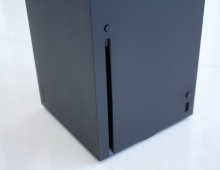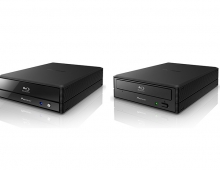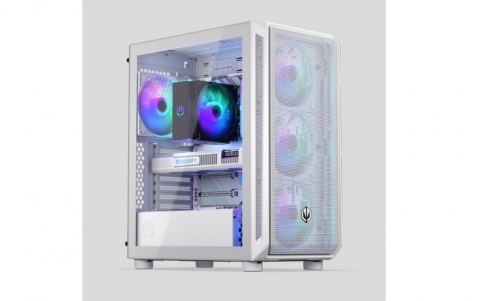
BD Burst Error Analyse system
Philips announces the Pit O'Resc based Burst Error Analysing System for BD to be commercially available for feb 2005.
In the BD ROM standadisation meeting TEG3, Philips has shown the results of their Burst Error Analysing System for BD. This Bust Error Analysing System for BD is based on the existing Pit O'Resc hardware platform for formatting and analysing. Seen the positive reactions Philips has decided to transfer this prototype firmware into a commercial product.
This Pit O'Resc based Burst Error analysing system for BD-ROM can be of interest to:
BD disc verification labs.
Disc manufacturers in order to have control and insight in the quality of the manufactured discs.
The Burst Error analysing system allows to check if the BD-ROM disc is within the specification of the BD-ROM standard regarding local defects and error rates.
Later upgrades of the BD ROM standard will be adopted in future software upgrades of the Burst Error analysing system.
Apart from the above disc verification, the Burst Error analysing system will allow to study more statistics on the bursts distributions:
Histograms showing the number of occurences of bursts as a function of length of the burst.
Histograms showing the positioning of the bursts with respect to BIS columns in a BD ECC block.
All analysing data can be averaged over an arbitrary number of BD ECC blocks.
The Burst Error analysing system works at the nominal measuring speed of 1X BD speed realtime (66 Mbit/sec) and has two input options:
Channel bit data after equalization accompanied with a clock. Analog HF signal. (Internal digital bit detection can then be used in the system which uses an asynchronous Limit Equalizer.) The Burst Error analysing system generates several outputs:
Logging files containing all details of the analysis per ECC block or averaged over any arbitrary number of ECC blocks, some of which can be selected to be CSV-files making it easy to import data in other applications.
Address information and a limited set of the statistics are displayed during the measurement in real time.
The Burst Error analysing system consists of
Pit O'Resc Hardware. This is a general purpose formatter and analysing hardware to be used in a PC. For the BD analyser you need the extended version.
The PIt O'Resc based firmware for Burst Error analyse.
The Burst Error analyser Graphical User Interface (GUI)
To complete the system the following is needed (not delivered from Philips)
PC with sufficient specification. 2,4 Ghz with the XP Operating system. Pit O'Resc based analysing requires two slots, one being a full sized PCI slot. Due to real estate issues we advise however a PC with 2 full sized PCI slots. As the logging is expected generate large amounts of data, free disc space in excess of 20 Gbyte is advised.
A BD pick up system providing: Channel bit data after equalization accompanied with a clock (TTL, 50 Ohm) or Analog HF signal (1.25Vpp or 5Vpp, 50 Ohm)
This allows to easily hook-up of the platform to any other proprietary designed BD analysing system.
Additional analysing functions:
In case of sufficient interest, Philips considers to increase the number of BD analysing functions on this Pit O'Resc based general purpose analysing platform. e.g. ADIP analyser, PIC analyser and BCA analyser.
Philips starts to accept orders for this Busts Error Analysing System. Release of the firmware allows shipment of systems from feb 15, 2005 onwards. Some measurement equipment suppliers are considering at this moment to offer this Busts Error Analysing System as an option for their BD measurement equipment.
This Pit O'Resc based Burst Error analysing system for BD-ROM can be of interest to:
BD disc verification labs.
Disc manufacturers in order to have control and insight in the quality of the manufactured discs.
The Burst Error analysing system allows to check if the BD-ROM disc is within the specification of the BD-ROM standard regarding local defects and error rates.
Later upgrades of the BD ROM standard will be adopted in future software upgrades of the Burst Error analysing system.
Apart from the above disc verification, the Burst Error analysing system will allow to study more statistics on the bursts distributions:
Histograms showing the number of occurences of bursts as a function of length of the burst.
Histograms showing the positioning of the bursts with respect to BIS columns in a BD ECC block.
All analysing data can be averaged over an arbitrary number of BD ECC blocks.
The Burst Error analysing system works at the nominal measuring speed of 1X BD speed realtime (66 Mbit/sec) and has two input options:
Channel bit data after equalization accompanied with a clock. Analog HF signal. (Internal digital bit detection can then be used in the system which uses an asynchronous Limit Equalizer.) The Burst Error analysing system generates several outputs:
Logging files containing all details of the analysis per ECC block or averaged over any arbitrary number of ECC blocks, some of which can be selected to be CSV-files making it easy to import data in other applications.
Address information and a limited set of the statistics are displayed during the measurement in real time.
The Burst Error analysing system consists of
Pit O'Resc Hardware. This is a general purpose formatter and analysing hardware to be used in a PC. For the BD analyser you need the extended version.
The PIt O'Resc based firmware for Burst Error analyse.
The Burst Error analyser Graphical User Interface (GUI)
To complete the system the following is needed (not delivered from Philips)
PC with sufficient specification. 2,4 Ghz with the XP Operating system. Pit O'Resc based analysing requires two slots, one being a full sized PCI slot. Due to real estate issues we advise however a PC with 2 full sized PCI slots. As the logging is expected generate large amounts of data, free disc space in excess of 20 Gbyte is advised.
A BD pick up system providing: Channel bit data after equalization accompanied with a clock (TTL, 50 Ohm) or Analog HF signal (1.25Vpp or 5Vpp, 50 Ohm)
This allows to easily hook-up of the platform to any other proprietary designed BD analysing system.
Additional analysing functions:
In case of sufficient interest, Philips considers to increase the number of BD analysing functions on this Pit O'Resc based general purpose analysing platform. e.g. ADIP analyser, PIC analyser and BCA analyser.
Philips starts to accept orders for this Busts Error Analysing System. Release of the firmware allows shipment of systems from feb 15, 2005 onwards. Some measurement equipment suppliers are considering at this moment to offer this Busts Error Analysing System as an option for their BD measurement equipment.




















